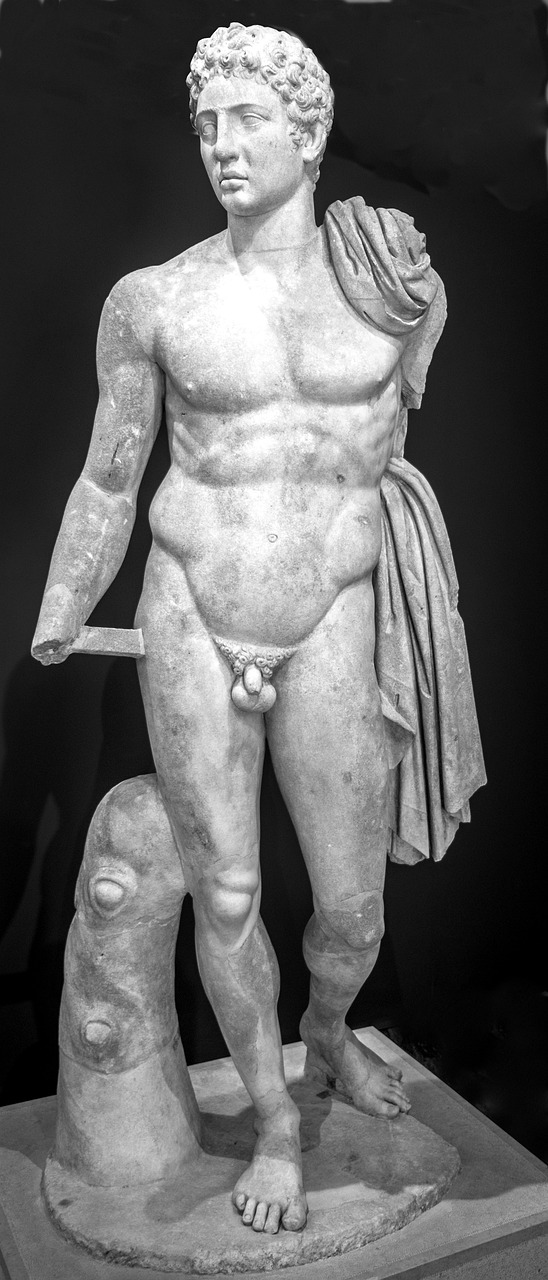The Multifaceted Role of Hermes in Greek Mythology
Hermes, a prominent figure in Greek mythology, served as the Olympian god associated with several realms. He was revered as the deity of herds and flocks, travelers, hospitality, trade, thievery, cunning, heraldry, language, athletics, and even astrology. Acting as Zeus’s personal messenger, Hermes was also tasked with guiding souls to the underworld, emphasizing his role as a pivotal link between worlds. Artistic representations varied, depicting him as a youthful and athletic figure without a beard or as a mature man with a beard, often seen donning winged boots and holding a herald’s staff.
Myths Surrounding Hermes
The tales of Hermes are rich with intrigue and mischief. One famous myth recounts his daring theft of Apollo’s cattle shortly after his birth, using cunning tactics to cover his tracks. He ingeniously fashioned the first lyre from a tortoise shell, a move that charmed Zeus, leading to his status among the twelve main gods of Olympus. In another narrative, Hermes petrifies the herdsman Battos as punishment for revealing his theft of Apollo’s cattle. Tasked by Zeus, he also confronts Argos Panoptes, the hundred-eyed giant protecting Zeus’s lover, Io. His adventures include aiding Perseus in defeating Medusa and providing Odysseus with a magical herb to resist the enchantments of Circe.
Symbols and Characteristics
Hermes’s most recognizable symbol was his herald’s wand, known in Greek as the kerykeion and in Latin as the caduceus. This was complemented by a knee-length robe, short cloak, winged hat, and footwear that allowed for swift movement. The herma, a stone pillar often used as a road marker, was also linked to him, symbolizing both protection and guidance. Various art depictions capture his distinctive characteristics, such as the herald’s wand, winged boots, and his iconic traveller’s hat.
Sacred Animals and Flora
Certain animals held sacred significance for Hermes, including the ram and the hare. Artistic representations frequently feature him riding a ram. Cattle, sheep, and goats were also attributed to him due to his association with herds. The crocus flower and the strawberry-tree were among his revered plants, further symbolizing his connections to nature and prosperity.
Hermes’s Family Lineage
Hermes was the offspring of Zeus and Maia, a Pleiad nymph, and grandchild to the Titans Kronos, Rheia, and Atlas. His siblings included several significant gods in the Greek pantheon, such as Apollo, Artemis, and Athena. He fathered Pan, the goat-footed god, and several mortal descendants, showcasing his expansive lineage.
Hermes in Classical Literature
Classical references to Hermes provide insights into his dual nature as both a trickster and a god of communication. He was notably depicted as an eloquent speaker and an astute figure tasked with facilitating dialogue and deals among mortals and immortals alike. This duality underscores his involvement in various myths, such as guiding Priam to Achilles to retrieve Hector’s body, ensuring the privacy of Zeus’s affairs, and even participating in mortal games.
Artistic Representations
Art from the classical era frequently illustrated Hermes in different contexts, displaying his numerous attributes and functions. Common depictions included scenes of him engaging with other gods, participating in athletic competitions, or acting in his capacity as a messenger.
Festivals and Worship
Hermes’s worship began in his birthplace, Arcadia, where he gained a significant following. Festivals known as Hermaia were held in his honor, further solidifying his importance in ancient Greek culture. His temples spread across Greece, with various epithets and forms attributed to him reflecting his multifaceted nature.
In conclusion, Hermes captured the imagination of ancient Greeks with his diverse roles, extending from a cunning thief to the divine messenger and protector of travelers. His rich mythology, aided by artistic depictions, has left a lasting legacy in both literature and art.



